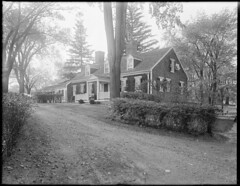Wednesday, 6 May, 6:00 P.M.
Robert Love’s Warnings: Searching for Strangers in Colonial Boston
Cornelia Hughes Dayton
In colonial America, warning out was a way for a community to regulate those to whom it would extend welfare. Between 1765 and 1774, an indefatigable town employee named Robert Love warned out four thousand new arrivals, including immigrants, newcomers from rural towns, and demobilized British soldiers. The records he left offer a unique insight into Boston’s population just before the Revolutionary War. Dayton, Associate Professor of History at the University of Connecticut and coauthor with Sharon V. Salinger of the first study of those documents, will discuss why so many people were on the move throughout the British Atlantic and why they came to Boston. In the Abbey Room.
Monday, 1 June, 6:00 P.M.
Boston and the American Revolution
Robert J. Allison
Why did the Revolution begin in Boston? What caused Bostonians to be more rebellious than other British subjects in North America? What were the Revolution’s consequences in Boston and beyond? Allison will examine these questions and discuss the consequences of the Revolution in Boston and beyond. He is chairman of the history department of Suffolk University, teaches at Harvard Extension School, and is vice president of the Colonial Society of Massachusetts. His many books include The Boston Massacre, A Short History of Boston, and The American Revolution: A Concise History. He teaches the online History of Boston course. In the Abbey Room.
Thursday, 9 July, 6:00 P.M.
Lafayette and the Farewell Tour: Odyssey of an American Idol
Alan R. Hoffman
On the same week as the historic arrival of Lafayette’s frigate Hermione to Boston harbor, Hoffman shares expert insight into the Marquis and his farewell tour of America. Hoffman, the translator of Lafayette in America in 1824 and 1825: A Firsthand Account of Lafayette’s Farewell Tour of America, describes the French nobleman’s reputation and explores its origins. In the Commonwealth Salon. [ADDENDUM: The day after seeing this talk announced, I got a report that the Boston Public Library will be closed on 13 July for lack of electricity, perhaps as part of its renovation. So I wasn’t surprised to learn that Hoffman’s talk is rescheduled.]





